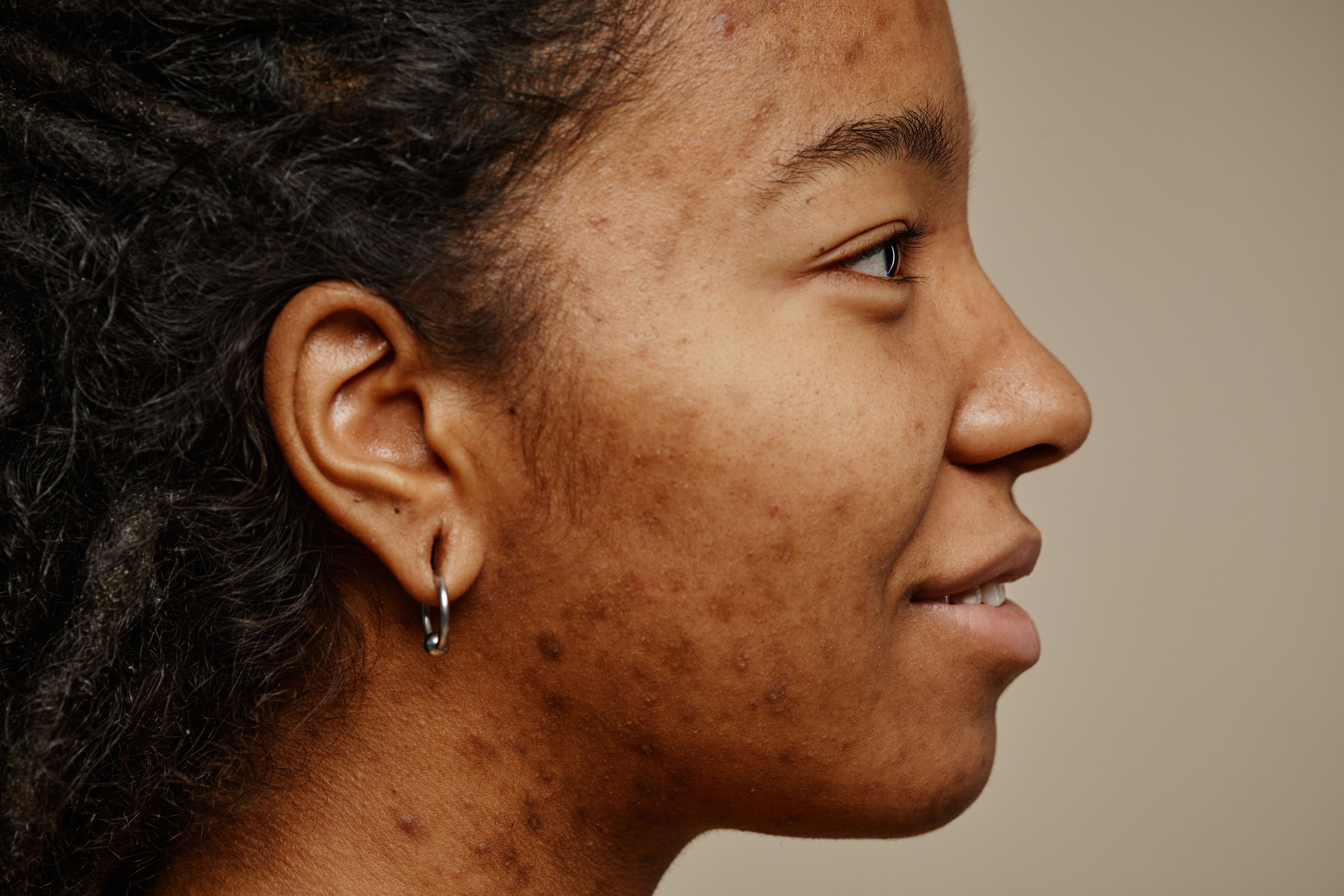- Case-Based Roundtable
- General Dermatology
- Eczema
- Chronic Hand Eczema
- Alopecia
- Aesthetics
- Vitiligo
- COVID-19
- Actinic Keratosis
- Precision Medicine and Biologics
- Rare Disease
- Wound Care
- Rosacea
- Psoriasis
- Psoriatic Arthritis
- Atopic Dermatitis
- Melasma
- NP and PA
- Skin Cancer
- Hidradenitis Suppurativa
- Drug Watch
- Pigmentary Disorders
- Acne
- Pediatric Dermatology
- Practice Management
- Prurigo Nodularis
- Buy-and-Bill
Publication
Article
Dermatology Times
Tazarotene 0.045% Lotion for Acne Safe, Improves Hyperpigmentation in SOC Patients
Author(s):
A poster presentation from the Fall Clinical Dermatology Conference for PAs and NPs evaluated the safety and efficacy of tazarotene for acne patients with skin of color.
Seventyfour/AdobeStock

“Maximizing efficacy while mitigating irritation is a key goal in managing acne in patients with skin of color, given the higher risk of pigmentary alterations in melanin-rich skin,” according to Cook-Bolden et al in a poster presentation from the 2023 Fall Clinical Dermatology Conference for PAs and NPs in Orlando, Florida. Cook-Bolden et al evaluated the safety and efficacy of tazarotene 0.045% lotion for the treatment of acne in patients in skin of color, as well as tazarotene’s ability to improve visible signs of hyperpigmentation.
The study authors noted that acne is one of the prominent causes of post-inflammatory hyperpigmentation (PIH) in patients with skin of color. While acne can be burdensome as well, PIH can be even more distressing, and patients with higher skin prototypes may be impacted more than those with lower skin prototypes. In some cases, topical retinoids can also reduce hyperpigmentation.
A study published in the American Journal of Clinical Dermatology2 reviewed numerous studies that included patients with PIH and/or acne and found that tazarotene treatment led to significant reductions in hyperpigmented lesions after 16-18 weeks of treatment with tazarotene vs adapalene or vehicle. Previous gel and cream formulations of tazarotene were associated with skin irritation and reactions. Now, the hydrating, lower-dose 0.045% lotion formulation uses proprietary polymeric emulsion technology for more efficient delivery of tazarotene into the dermal layers.
In 2 identical phase 3 randomized, double-blind, vehicle-controlled studies (NCT03168321; NCT03168334), participants aged ≥9 years with moderate-to-severe acne (score of 3 or 4 on the Evaluator’s Global Severity Score) were randomized 1:1 to once-daily tazarotene 0.045% lotion (n=121) or vehicle lotion (n=132) for12 weeks.CeraVe hydrating cleanser and moisturizing lotion were provided to patients as needed for additional moisturization and cleansing of the skin. Safety evaluations included reports of treatment-emergent adverse events (TEAEs) and investigator-assessed hyperpigmentation (graded on a 4-point scale from 0 [none] to 3 [severe]).
The pooled intent-to-treat population included 1614 patients, of which 262 (16.2%) self-identified as Black. The safety population included 253 Black patients.
Results
Hyperpigmentation
- Rates of investigator-assessed hyperpigmentation in Black patients were high at baseline; approximately 40% of patients in both the tazarotene 0.045% lotion and vehicle arms had mild or moderate hyperpigmentation (mild [score=1]: tazarotene=28.1%, vehicle=22.7%; moderate [score=2]: tazarotene=11.6%, vehicle=13.6%)
- Rates of hyperpigmentation decreased by week 12 with tazarotene treatment (from 40.5% to 31.4%), but remained relatively unchanged with vehicle (37.9% to 37.2%)
Safety
- TEAEs were mild-to-moderate in severity in most tazarotene-treated Black patients
- The most common TEAEs with tazarotene lotion occurred at the application site, including pain (6.6%), exfoliation (5.0%), dryness (3.3%), and pruritis (2.5%)
- No Black patients reported application site irritation or dermatitis with tazarotene lotion
Cook-Bolden et al concluded that “Tazarotene 0.045% lotion was safe and well tolerated, with no reports of application-site irritation or dermatitis in Black participants after 12 weeks of once-daily treatment. Tazarotene treatment led to improvements in hyperpigmentation, an inflammation-associated sequela of acne. As PIH can persist for up to 12 months, additional improvement in hyperpigmentation may be expected with continued tazarotene use.”
References
- Cook-Bolden F, Stein Gold L, Baldwin H, et al. Safety of tazarotene 0.045% lotion and hyperpigmentation improvements in black participants with moderate-to-severe acne. Poster presented at the 2023 Fall Clinical Dermatology Conference for NPs and PAs; June 9-11, 2023; Orlando, FL.
- Callender V, Baldwin H, Cook-Bolden F, Alexis A, Stein Gold L, Guenin E. Effects of topical retinoids on acne and post-inflammatory hyperpigmentation in patients with skin of color: a clinical review and implications for practice. Am J Clin Dermatol. 2022;23(1):69-81. doi:10.1007/s40257-021-00643-2.







